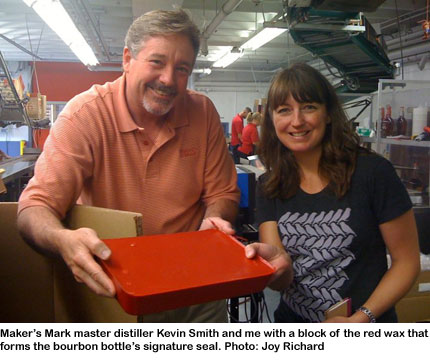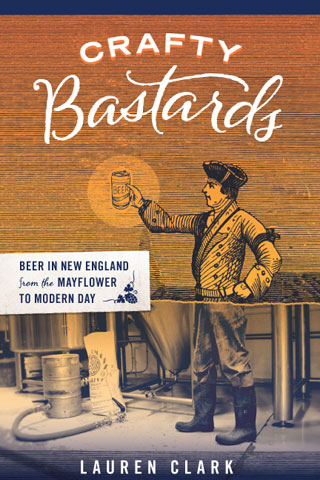June 19th, 2010
Birth of a bourbon

When Maker’s Mark president Bill Samuels Jr. and his master distiller, Kevin Smith, decided to make their company’s first new bourbon in over 50 years, they could have gone the well-traveled route: an extra-aged, high-proof whiskey with “reserve” in the name (and a price tag well over $50). But their whole philosophy goes against the whopping spice, caramel, smoke and tannic flavors that can come from extended time in charred oak barrels. They’re all about toasty, mellow, vanilla — a flavor profile they get by blending whiskey from barrels that rotate through three-story rickhouses (barrel-aging warehouses) for a “mere” six to eight years, compared to 12-20+ for some boutique bourbons. So, they decided to simply take their regular Maker’s Mark bourbon and amp it up it somehow. But how? Enter the wood chef.
I admit I laughed when I heard that term, too. (Disclosure: Maker’s Mark flew me down to Kentucky to check out the distillery.) But I realized it wasn’t a stretch when I talked to the chef himself, Brad Boswell of the Independent Stave Company. Boswell’s family has been making oak barrels for aging spirits and wine for 98 years. And lately, they have brought a healthy dose of science to their medieval craft. They begin with a thorough understanding of the chemical composition of different species of oak, and of the appropriate length of seasoning (aging oak staves in the open air) for the intended beverage. Then they cook the staves or finished barrels according to a library of recipes that “pinpoint layers of flavor” between toasted and charred, says Boswell. Basically, he can make you a barrel that imparts to its contents the exact characteristics you’re looking for.

In Maker’s Mark’s case, those characteristics were “sweet toasty oak, not smoky. Forward on the palate. Long finish. No sour or bitter aftertaste. A little spicy,” say my notes from a conversation with Smith. But the distiller knew that that particular combo of spicy notes and long finish typically go hand in hand with at least a bit of smokiness, sourness and bitterness. “We were asking for the impossible,” says Smith. In fact, they were asking for something that couldn’t be achieved with any sort of aging regime in the charred barrels that are standard to the bourbon industry. (The wood on the inside of the barrel is literally blackened with fire.)
It took 125 experiments — many of which “sucked,” says Smith — to hit upon the right wood recipe, one that was entirely new in bourbon making. It begins with French, rather than the standard American, oak staves. Those staves are seasoned for a long 18 months, which lowers the wood’s tannins and intensifies its vanillins. Boswell then tried a new cooking technique: he seared the staves on both sides, like a steak, to just short of charred. Boswell catalogued this recipe as Profile No. 46.
Smith arrayed 10 of the staves in an empty Maker’s barrel, then poured the fully matured bourbon back in to rest for about nine weeks. The combination of the seasoned French oak and Boswell’s searing method gave just the sweet toastiness and spicy notes — think cinnamon instead of rye bread — that Maker’s wanted. Samuels and Smith had their new product, and they decided to name it Maker’s 46, after Boswell’s special wood recipe.

This may all sound pretty esoteric, but the result is a bourbon quite different from Maker’s Mark. The 46 has a dry spiciness, a rich texture and a higher proof (94 compared to 90 for the flagship) that are sure to appeal to the bourbon, and even rye, adventurer, without alienating the devoted Maker’s Mark drinker. And it’s reasonably priced at about $10 more than traditional Maker’s, which is usually $23 to $25. Maker’s 46 will be available in Boston sometime next month.
The 70-year-old Samuels, a seventh-generation distiller who is nearing retirement, seems pleased by the new whiskey. He admits that it arose partly out of market demand for something new and exciting from Maker’s, which largely created the premium bourbon category that is now exploding. But he also wanted to be remembered for something other than faithfully reproducing his father’s bourbon recipe from the 1950s. Now his nightmares of a tombstone that says, simply, “He didn’t screw it up,” are over.
Coming up: my tour of the Kentucky bourbon trail.
Tags: Bill Samuels Jr., bourbon, Brad Boswell, Kentucky, Kevin Smith, Maker's 46, Maker's Mark
Posted in Booze in the news, Whiskey | 8 Comments »
